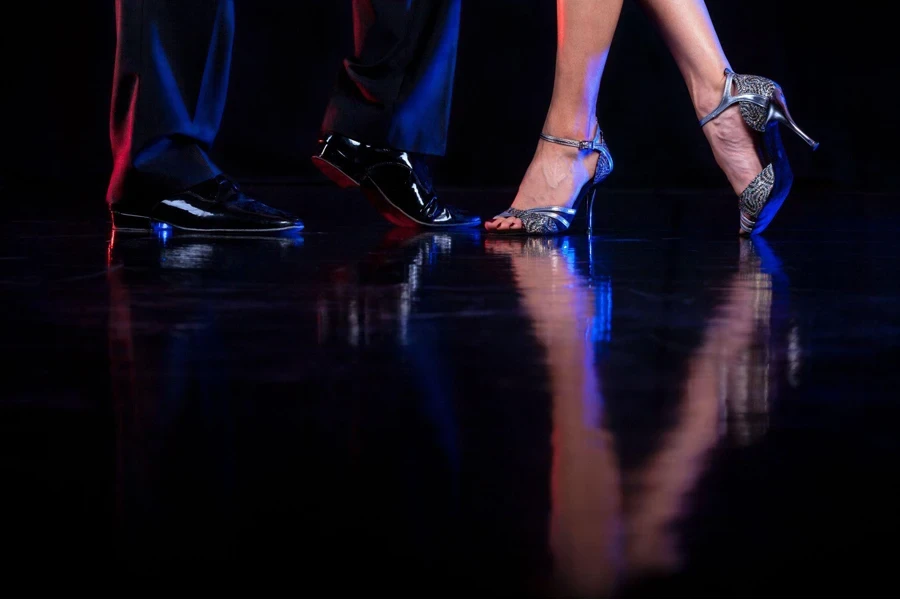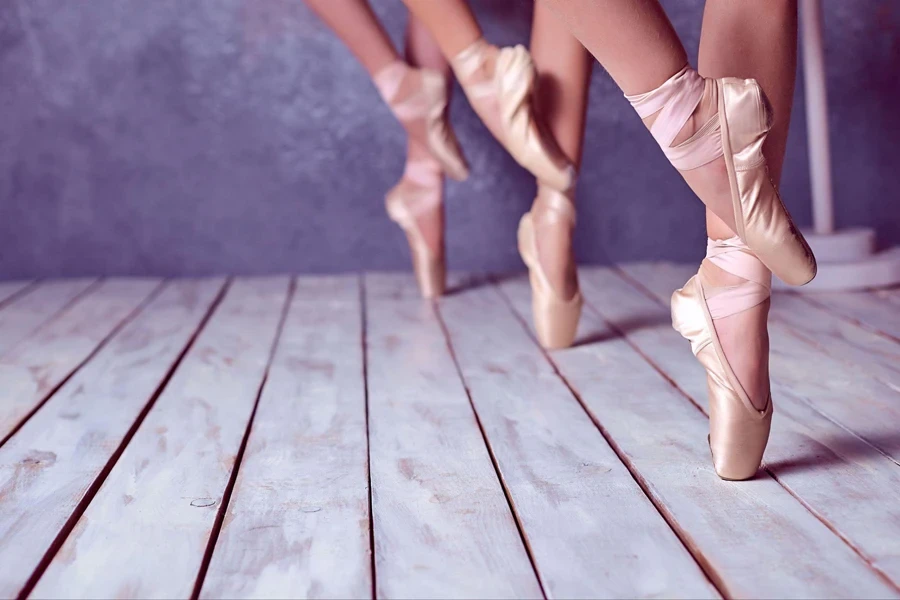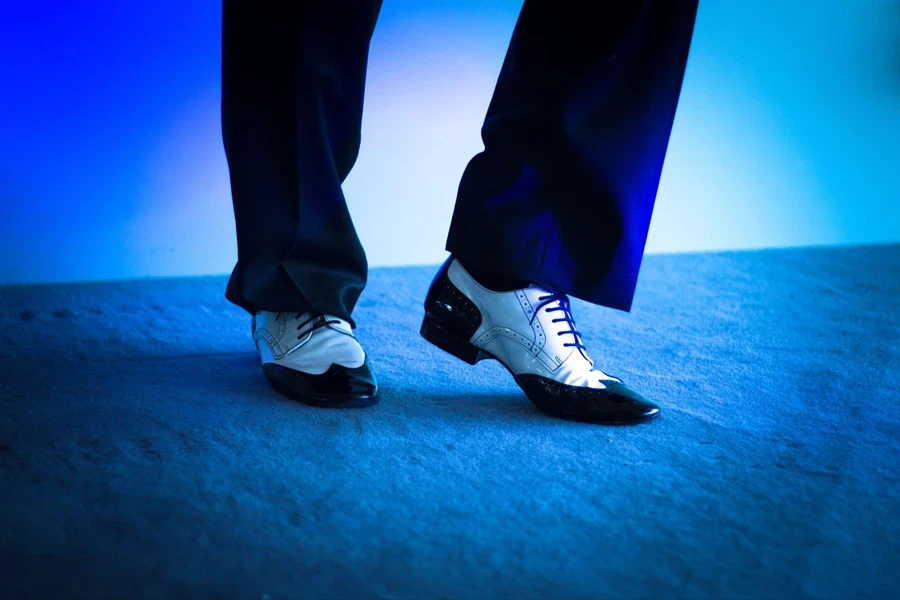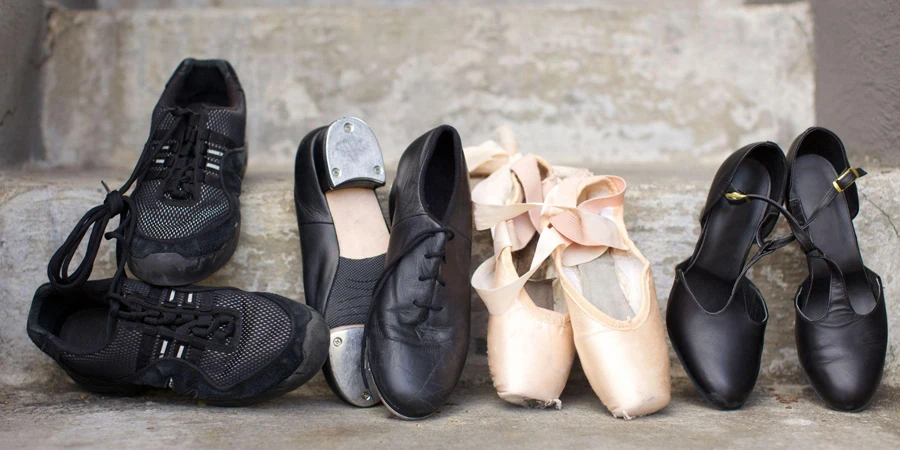Table of Contents
● Introduction
● Dance Shoes Market Overview
● Key Considerations of Selection
● Conclusion
Introduction
Dance, an art form that transcends boundaries, requires not just talent and practice but also the right gear, particularly shoes. As we twirl into 2024, the selection of dance shoes becomes more pivotal than ever. With advancements in technology and design, choosing the perfect pair is essential for dancers aiming to enhance their performance while ensuring utmost comfort and style. This guide serves as the compass of business professionals and online retailers in the vast sea of options, steering you towards making an informed choice that matches your dance floor needs.
Dance Shoes Market Overview
The dance shoes market is a dynamic segment within the athletic footwear industry, characterized by specialized designs catering to various dance genres. There are 90500 searches on dance shoes on Google Ads. As of 2023, the global market for dance shoes has witnessed a steady growth, with a projected Compound Annual Growth Rate (CAGR) of approximately 5% leading into 2024. This growth is fueled by increasing participation in dance-related activities, both recreational and professional, and a heightened awareness of the importance of appropriate footwear in enhancing performance and preventing injuries. The market’s expansion is also supported by the increasing demand for stylish yet convenient dance shoes across all ages, particularly among millennials and Generation Z.
The market is highly competitive, with several key players dominating the landscape. Companies such as Lanvin, VANESSA, Sansha, and Bloch are among the major players in the dance shoes market. These companies, along with others like Christian Louboutin, Dansgirl, Grishko, and Capezio, continuously make innovations in terms of materials, design, and technology to meet the diverse needs of dancers across styles such as ballet, tap, jazz, and ballroom, among others. The United States and China are significant markets for dance shoes, with these regions expected to continue their growth trajectory during the forecast period.

Key Considerations of Selection
Style Specificity
Each type of dance shoe is uniquely designed to enhance the dancer’s performance in their specific genre, from the delicate pointe work of ballet to the rhythmic tapping of tap dance and the graceful glides of ballroom dancing.
Ballet Slippers vs. Pointe Shoes: Ballet dancers start with soft slippers that provide flexibility, essential for beginners to master foundational moves. As they advance, dancers transition to pointe shoes, which have a reinforced toe box and stiffer sole, supporting the dancer’s weight on their toes for pointe work. These shoes are crucial for executing the ethereal, floating quality of ballet movements at advanced levels.
Tap Shoes: Essential for producing the characteristic sounds in tap dancing, these shoes are equipped with metal taps on the heel and toe. The quality of the taps, along with a firm sole, is critical for clarity and resonance of sound, making tap shoes unique to their style.
Jazz Shoes: Designed for the dynamic and intricate footwork of jazz dance, these shoes offer a snug fit and flexibility. They typically have a low heel and are made from supple leather or canvas to accommodate swift movements and turns, ensuring dancers can execute precise footwork with ease.

Ballroom and Latin Shoes: Tailored for the elegance and posture of ballroom and Latin dances, these shoes come in various heel heights to suit different dances. They are designed for stability and smooth movement across the dance floor, with suede soles to provide the right balance of grip and slide.
Material Matters
In addition to its durability and support, leather, particularly split leather, is chosen for its high elasticity and good vapor permeability, making it ideal for dance shoes. Split leather soles offer excellent traction on parquet floors and are lightweight, enhancing comfort during dance. Leather’s resilience means it stretches rather than cracks or breaks under the stress of dance movements.
As a lightweight and breathable material, canvas is favored for its ability to provide comfort during long rehearsals. Its flexibility and snug fit make it suitable for various dance styles, ensuring dancers can perform intricate footwork without restraint.
Satin is preferred for its aesthetic appeal, especially in performance shoes, where its sheen adds to the visual presentation of dance. However, its beauty comes with a trade-off in durability, making it less suitable for rigorous dance routines or practices but ideal for performances where visual appeal is paramount.
Sole Selection
Full Sole vs. Split Sole: Full soles, often made from leather or synthetic materials, provide comprehensive support and stability, making them suitable for beginners or styles requiring a strong foundation. Split soles, on the other hand, feature a break in the sole under the arch, allowing for enhanced flexibility and foot articulation, preferred in styles like ballet and modern dance for more intricate footwork.

Suede Soles: Predominantly found in ballroom and Latin dance shoes, suede soles offer the perfect balance between grip and slide on the dance floor. This material allows dancers to execute spins and turns with control, preventing slipping while still enabling smooth movement.
Rubber Soles: Common in street, modern, and practice dance shoes, rubber soles provide excellent traction and durability. They are ideal for dance styles that involve more dynamic movements and require a non-slip surface, ensuring safety and performance stability on various floor types.
Fit and Comfort
Dance shoes should offer a snug fit to ensure proper support without cramping the toes, with some styles possibly requiring a size adjustment for optimal comfort. The width of the shoe is crucial, especially for styles like ballet slippers, to accommodate different foot shapes comfortably. For dancers with high arches or specific foot conditions, arch support is a key feature to look for in dance shoes. High-quality dance shoes often come with integrated footbeds featuring additional padding, soft pads, and joint support to enhance comfort. Special attention to heel design is also important, with features like shock-absorbing heel cushioning and a soft, flexible midsole contributing to the overall comfort and support of the shoe, ensuring dancers can perform with ease and stability.
Aesthetic and Performance
Color and Design: Selecting the right color and design for your dance shoes is crucial to complement your dance attire or meet specific performance aesthetics. Whether you’re aiming for a seamless look or a standout contrast, the choice should align with the overall theme and requirements of your dance routine, ensuring visual harmony and style coherence on stage.
Heel Height and Shape: The heel height and shape of dance shoes are tailored to the demands of different dance styles, significantly influencing a dancer’s balance, posture, and performance quality. For instance, ballet flats offer stability for classical movements, while higher heels in Latin dance shoes enhance hip movements and aesthetics. Choosing the appropriate heel height and shape is essential for optimal performance and injury prevention.
Ventilation: The heel height and shape of dance shoes are tailored to the demands of different dance styles, significantly influencing a dancer’s balance, posture, and performance quality. For instance, ballet flats offer stability for classical movements, while higher heels in Latin dance shoes enhance hip movements and aesthetics. Choosing the appropriate heel height and shape is essential for optimal performance and injury prevention.

Conclusion
Selecting the right dance shoes in 2024 is more than just a matter of style; it’s about enhancing performance, ensuring comfort, and preventing injuries. With the dance shoes market continuously evolving, understanding the key considerations—ranging from style specificity and material to fit, comfort, and durability—is crucial for business professionals and online retailers. Whether your customer is a ballet dancer requiring the delicate balance of a perfect slipper or a ballroom enthusiast in search of that graceful glide, the right pair of dance shoes can elevate their performance to new heights. Remember, the best dance shoes are the ones that fit not just the feet, but also the dance aspirations.




